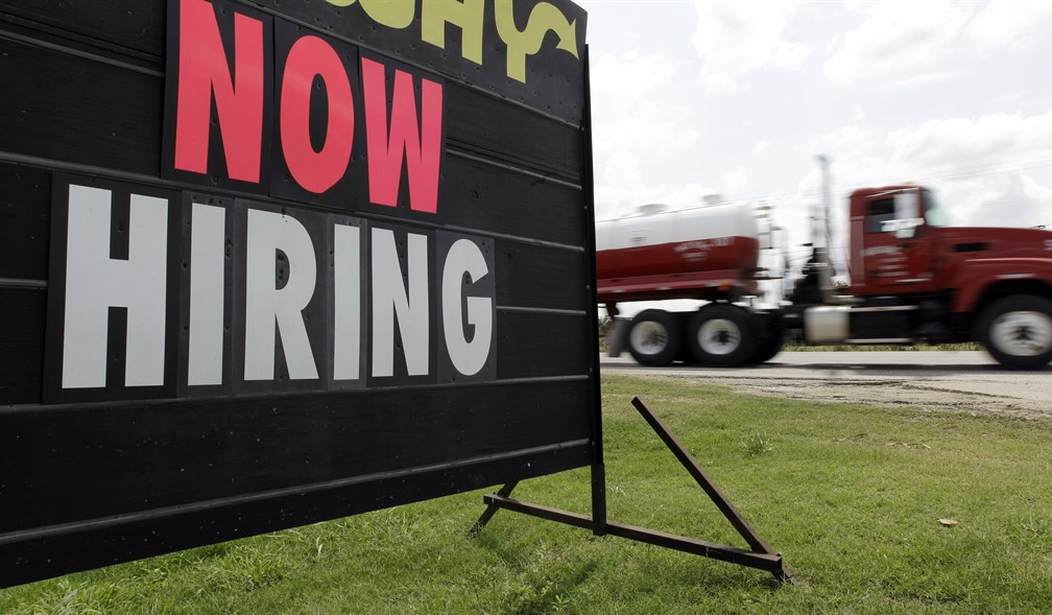Starting early in the summer as the pandemic began to ease and the nation’s businesses began to reopen on a large scale, a debate about the available workforce broke out. The federal government had been providing $300 per week enhancements to unemployment benefits and many observers (including yours truly) felt that this was an obvious disincentive for some people in lower-wage jobs to return to work. We were experiencing huge numbers of job openings with nobody to fill them. But nearly half of the states moved to end the federal enhancements early and now almost all the rest have followed suit. The problem is that ending those programs hasn’t really moved the needle in terms of the near-record number of job openings that remain, particularly in the foodservice industry. So what’s going on? (Associated Press)
Earlier this year, an insistent cry arose from business leaders and Republican governors: Cut off a $300-a-week federal supplement for unemployed Americans. Many people, they argued, would then come off the sidelines and take the millions of jobs that employers were desperate to fill.
Yet three months after half the states began ending that federal payment, there’s been no significant influx of job seekers.
In states that cut off the $300 check, the workforce — the number of people who either have a job or are looking for one — has risen no more than it has in the states that maintained the payment. That federal aid, along with two jobless aid programs that served gig workers and the long-term unemployed, ended nationally Sept. 6. Yet America’s overall workforce actually shrank that month.
Assuming these numbers are accurate (they do involve estimates and a bit of scrying from J.P. Morgan Chase), the answer to why we’re seeing these figures isn’t as clear as some of us had expected. There were definitely some people who went back to their old jobs when the enhanced benefits ended, but it wasn’t nearly the stampede we had hoped to see.
As of a couple of weeks ago, employers had posted a number of job openings that is approaching an all-time record. And yet, unemployment rates remain above projected levels and there are still 5 million fewer jobs than were recorded prior to the beginning of the pandemic in early 2020.
A deeper analysis by the AP shows almost no difference between the size of the workforce in states that cut off the benefits early and those that didn’t. And yet nobody seems to be offering any concrete data as to what is causing this or what might alleviate it.
The analysts they interviewed for that report are pointing to two of the same arguments we were hearing at the beginning of the summer and both of them relate to the pandemic. One possible factor is that there are still a lot of people who are afraid to return to in-person work. Others are likely working parents who are having trouble finding childcare services now that the kids are returning to school, but many schools are still experiencing disruptions in class schedules. The problem is that nailing down reasons like those requires some mindreading skills on the parts of the analysts because nobody asks “why” a person is out of work, so we don’t collect that data.
Let’s assume for the moment that those reasons are accurate. If people are afraid to return to work even though infection rates have fallen and vaccination rates are above 70% in many areas, I would suggest that the combination of the government and most of the mainstream media feeding people a daily diet of pandemic panic-porn could be part of it. And if parents still have children at home when the schools are almost all reopening for in-person learning, it probably has a lot to do with the same factors, plus the teachers’ unions and school boards doing the same thing while pushing mask and vaccination mandates.
Other unemployed workers the AP spoke to said they are simply being “pickier” about what sort of job they are willing to take now that they’ve had the chance to spend some time at home with their families and/or working remotely. But how long can they afford to be that picky once their benefits run out? That just doesn’t make a lot of sense.
No matter the cause, we still need to ramp the workforce back up to where it was at the end of the Trump administration. Whether or not that success can be duplicated under the Biden administration remains an open question. And even if we do get people back on the job, a combination of inflation and empty shelves in the stores will be serving as roadblocks to getting to the old “normal” we had before the virus blew into town.








